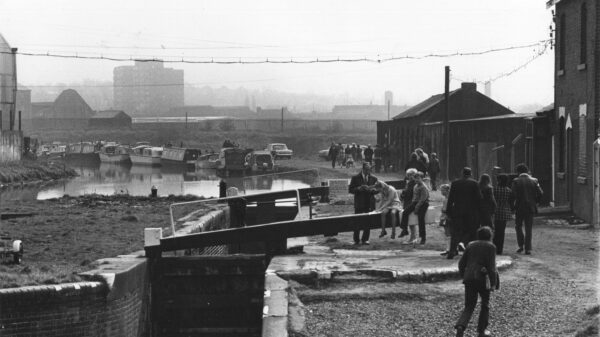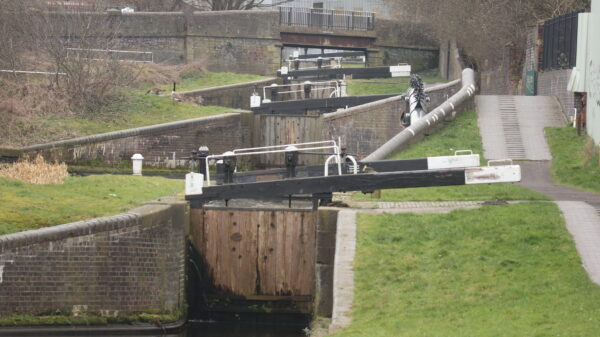Titford Canal and Oldbury Locks
The Titford Canal runs from Oldbury Junction on the old route of the Birmingham Canal. It rises through a flight of six locks to Titford Pool which is a reservoir made in 1773-4. The reservoir now lies under, and to both sides of, an elevated section of the M5 motorway near junction 2. Titford Canal was authorised under the Birmingham Canal Act 1768 which created the original Birmingham Canal. Construction began in 1836 and the canal opened on 4th November 1837. Two canal branches used to run from Titford Pools:
- The Portway Branch, abandoned in 1954, served coal mines in the Titford Valley.
- The Causeway Green Branch was opened in 1858 and abandoned, in parts, in 1954 and finally in September 1960.
The six Titford Locks, also known as Oldbury Locks, were nicknamed ‘The Crow’, as they were next to chemical works owned by Jim Crow. These locks have single lower gates to reduce leakage. This design became more common in other parts of the Birmingham Canal Navigations. In the 1960s, the locks got very silty and boats could not get through. Between 1973 and 1974, they were cleared out by hand by the Birmingham Canal Navigations Society with strong support from Waterway Recovery Group so that the locks could be used again.



